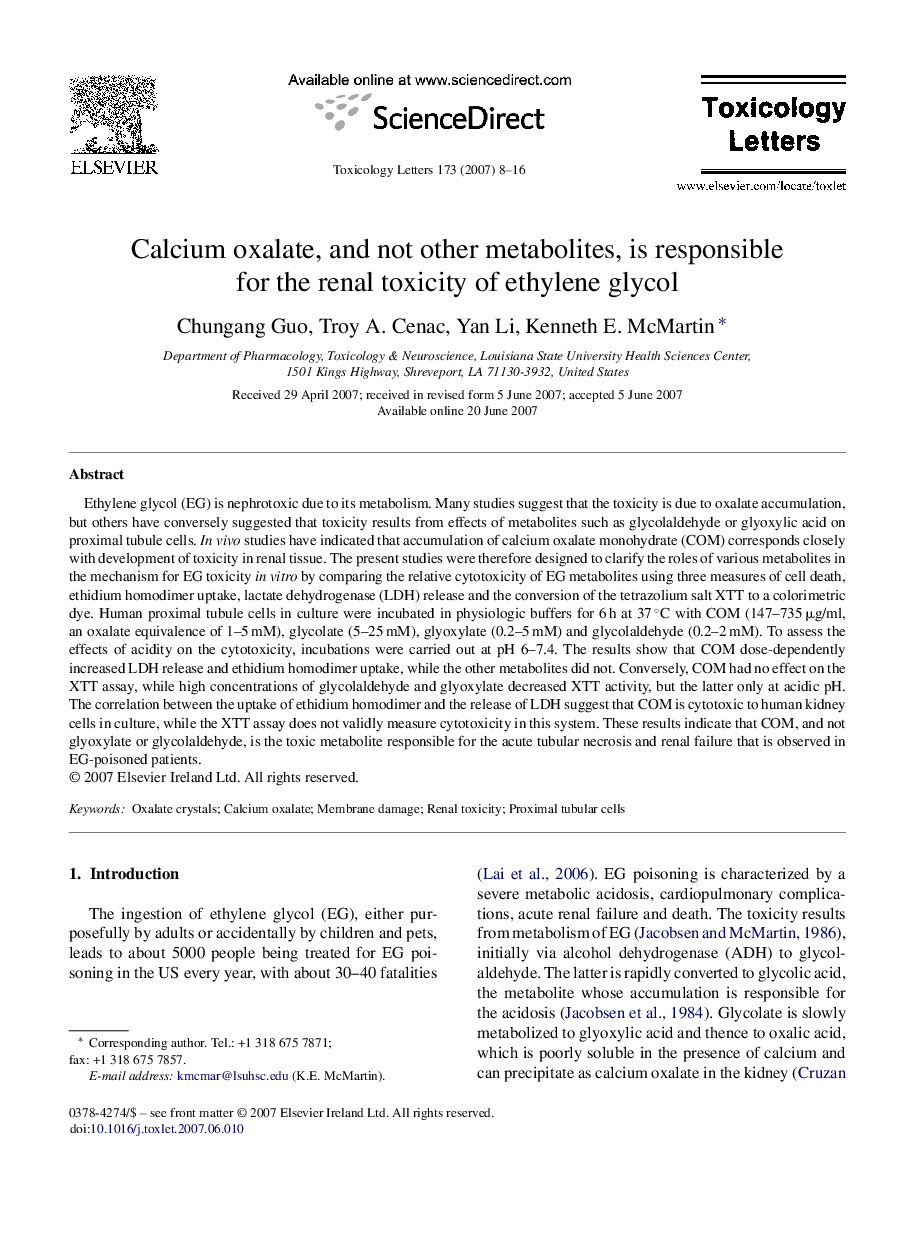| Article ID | Journal | Published Year | Pages | File Type |
|---|---|---|---|---|
| 2601985 | Toxicology Letters | 2007 | 9 Pages |
Ethylene glycol (EG) is nephrotoxic due to its metabolism. Many studies suggest that the toxicity is due to oxalate accumulation, but others have conversely suggested that toxicity results from effects of metabolites such as glycolaldehyde or glyoxylic acid on proximal tubule cells. In vivo studies have indicated that accumulation of calcium oxalate monohydrate (COM) corresponds closely with development of toxicity in renal tissue. The present studies were therefore designed to clarify the roles of various metabolites in the mechanism for EG toxicity in vitro by comparing the relative cytotoxicity of EG metabolites using three measures of cell death, ethidium homodimer uptake, lactate dehydrogenase (LDH) release and the conversion of the tetrazolium salt XTT to a colorimetric dye. Human proximal tubule cells in culture were incubated in physiologic buffers for 6 h at 37 °C with COM (147–735 μg/ml, an oxalate equivalence of 1–5 mM), glycolate (5–25 mM), glyoxylate (0.2–5 mM) and glycolaldehyde (0.2–2 mM). To assess the effects of acidity on the cytotoxicity, incubations were carried out at pH 6–7.4. The results show that COM dose-dependently increased LDH release and ethidium homodimer uptake, while the other metabolites did not. Conversely, COM had no effect on the XTT assay, while high concentrations of glycolaldehyde and glyoxylate decreased XTT activity, but the latter only at acidic pH. The correlation between the uptake of ethidium homodimer and the release of LDH suggest that COM is cytotoxic to human kidney cells in culture, while the XTT assay does not validly measure cytotoxicity in this system. These results indicate that COM, and not glyoxylate or glycolaldehyde, is the toxic metabolite responsible for the acute tubular necrosis and renal failure that is observed in EG-poisoned patients.
